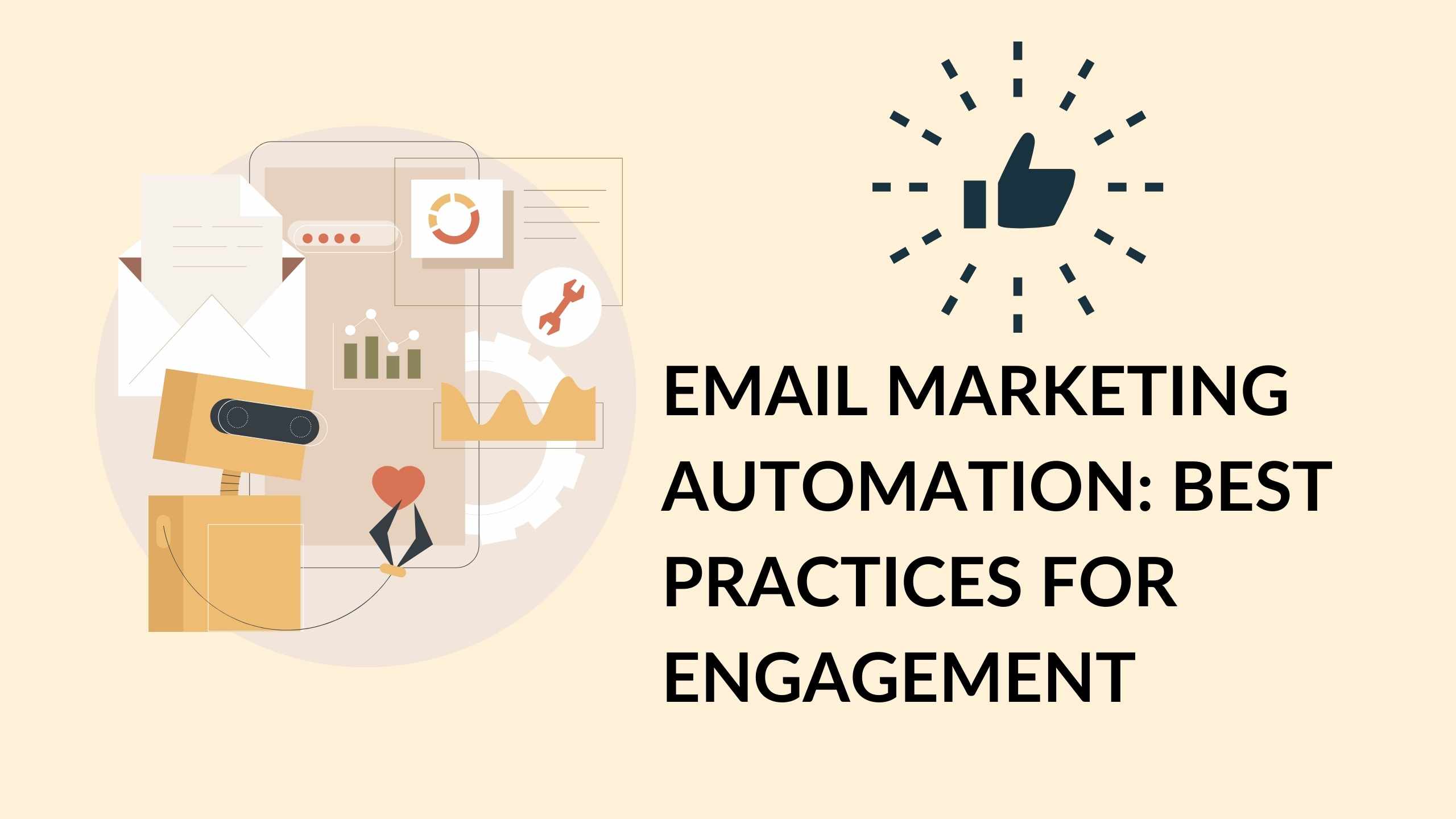Email Marketing Automation: Best Practices for Engagement
-


Mastering Email Marketing Automation: Top Practices for Engaging Campaigns
In the ever-evolving landscape of digital marketing, mastering the art of email marketing automation is a game-changer. Not only does it save time for business owners, but it also provides a personalized and engaging experience for potential customers. According to HubSpot research, email marketing boasts an impressive average return on investment (ROI) of $42 for every $1 spent, making it a powerful tool for businesses seeking success in the digital realm.
The Gold Standard: Email Automation Unleashed
Email automation, the unsung hero of modern marketing, allows businesses to tailor experiences for potential customers while efficiently utilizing time and resources. Despite its proven effectiveness, some businesses are still not harnessing the full potential of email automation. Whether due to perceived complexity or lack of prioritization, the result is often disengaged prospects and suboptimal conversion rates.
To empower your email campaigns and maximize their potential, it’s crucial to embrace the following seven best practices for email automation.
1. Follow Up on Customer Behavior
The cornerstone of effective email automation lies in behavior-based triggers. Instapage reports that over 75% of email revenue comes from triggered campaigns. Whether a prospect revisits the pricing page or lingers on a product page, leveraging these behaviors can trigger a sequence of automated emails. This approach ensures that your communications are highly relevant, timely, and aligned with the prospect’s interests.
2. Build Follow-Ups Into Your Automated Campaigns
A single email may not suffice. G2’s research reveals that businesses implementing marketing automation experience a staggering 451% increase in qualified leads. To capitalize on this, consider following up in different ways, such as sending a similar message multiple times in a short period or diversifying content over an extended period. This strategic approach keeps your brand top-of-mind and increases the likelihood of conversion.
3. Use Email Automation to Deliver Diverse Content
Content is king, even in automated emails. Statista highlights that 67% of email marketers plan to use data to personalize content for increased engagement and sales. Take inventory of your existing content, including blog posts, case studies, podcasts, videos, and webinars. Integrate links to these resources within your emails to enhance engagement and provide additional value to your audience.
4. Prompt 1:1 Conversations, Purchases, or Immediate Actions
The power of a well-crafted call-to-action (CTA) cannot be overstated. McKinsey’s research indicates that the average order value of an email is at least three times higher than that of social media. Each email should guide the reader toward a specific action, whether it’s scheduling a demo, reading a blog post, or making a purchase. Implementing strategic CTAs not only drives immediate revenue but also facilitates measurable engagement tracking.
5. Choose an Easy-To-Set-Up Email Automation Stack
The right technology makes all the difference. Liana Technologies reveals that the lack of expertise and resources is a common barrier to marketing automation adoption. Look for an email automation platform with a built-in customer relationship management (CRM) system, website analytics, and pre-loaded customer filters. An intuitive platform simplifies the setup process, enabling businesses to unlock the full potential of email automation without the need for extensive technical expertise.
6. Leave “Creepiness” Behind
Transparency is key in the age of automation. eConsultancy reports that 74% of marketers believe targeted personalization increases customer engagement. While leveraging behavioral data for automation is powerful, it’s essential to avoid being perceived as intrusive. Be open and honest about your use of automation tools to build trust with your audience. Strive for a personalized and engaging customer experience without crossing into the realm of discomfort.
7. Focus on Your Business Priorities
Every business is unique, and so are its priorities. Instapage highlights that segmented and personalized automated email messages enjoy 46% higher open rates than traditional messages. Identify the most impactful automated campaigns for your business and address existing gaps. Whether it’s following up with leads who repeatedly visit your pricing page or re-engaging subscribers at risk of churn, prioritize campaigns that align with your business goals.
Email Automation FAQs
What Is Email Automation?
Email automation enhances traditional email marketing by factoring in user behavior to increase the relevance of emails. Platforms like GoSquared automatically trigger emails based on predefined criteria, offering a more authentic experience for customers while requiring less human time and resources.
How to Scale Email Automation?
Scaling email automation involves acquiring leads, building relationships, converting deals, and delighting customers. Effective lead capturing techniques and careful lead management contribute to the sustained growth of your audience and engagement.
Email Automation Benefits
The benefits of email automation are vast and impactful for businesses of all sizes. By considering customer behavior, leveraging analytical data, and implementing best practices, businesses can save time, increase engagement, and boost conversions.
For more insights and in-depth guides on email automation, explore the following resources:
- Mailmodo: Email Automation Best Practices
- EngageBay: Email Marketing Automation Best Practices
- MoEngage: Email Marketing Automation Best Practices for Your Website
- SendGrid: Email Marketing Automation Best Practices
- Finalsite: Email Automation Best Practices
Unlock the potential of your email marketing with these proven strategies. From behavior-based triggers to transparent and engaging communication, these best practices will elevate your brand’s email campaigns to new heights.





